Note: this section is no longer updated.
Canon
- Canon EF-M Mount – APS-C Sensor
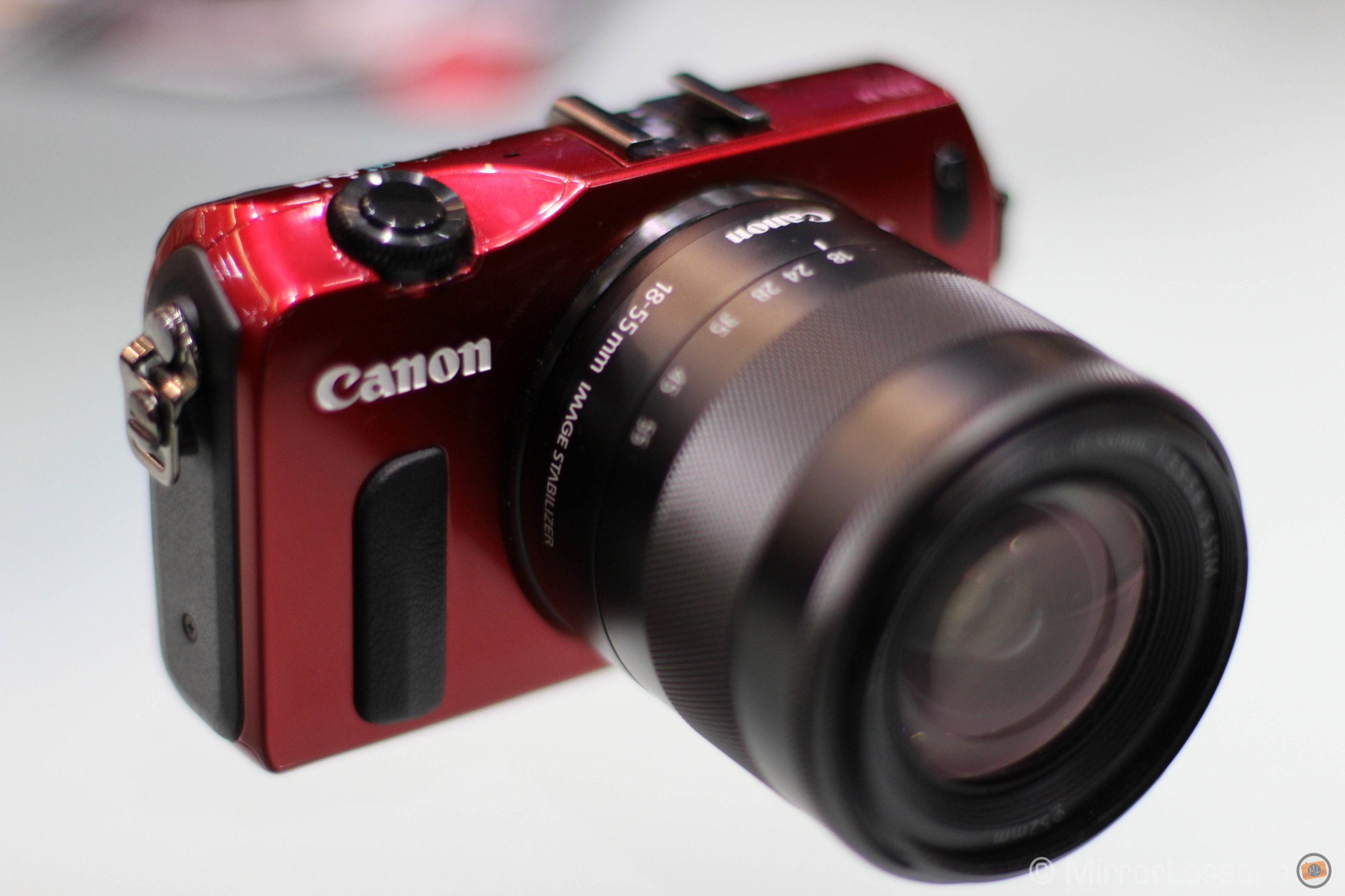
Canon investment in the Mirrorless segment has been very low as of today. The Eos M is currently the only MILC series released with only four native lenses available. The brand probably don’t believe yet at the potential of mirrorless cameras.
Canon EOS-M (2012)
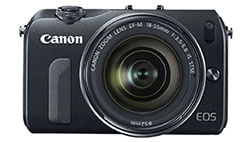
- 18 Megapixel CMOS sensor
- ISO 100-12800; expandable to 25600
- Phase detection AF with 31 points
- Full HD Movie up to 30fps
- Touch sensitive LCD
Canon EOS-M (2012)
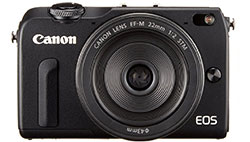
Canon Eos-M2 (2013, Japan only)
Same version as the Eos M but with Wifi connectivity.
Canon Eos-M3 (2015)
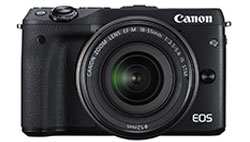
- 24 Megapixel CMOS sensor
- ISO 100-12800; expandable to 25600
- Phase detection AF with 49 points
- Full HD Movie up to 30fps
- Touch sensitive LCD
- Wifi
Epson
- Leica M Mount / APS-C Sensor
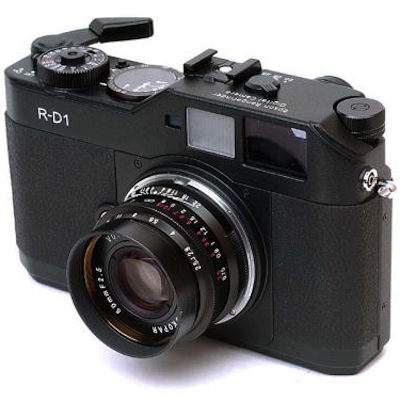
The Epson R-D1 has been the world’s first digital rangefinder camera (which is also mirrorless), featuring a 6mp APS-C sensor and compatible with Leica and third party M lenses. The series is now discontinued.
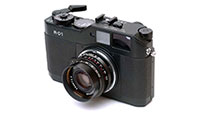
Epson R-D1 (2004)
- 6.1-megapixel CCD sensor
- ISO 200-1600
- Manual focus only
- Optical rangefinder
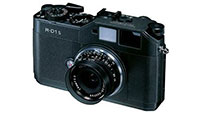
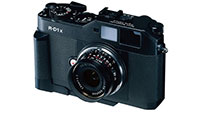
Fujifilm
- Fujifilm X-mount – APS-C Sensor
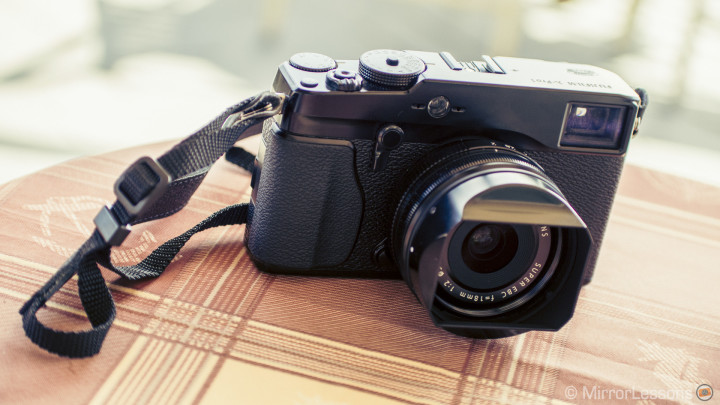
The Fujifilm X line is one of the most recent in the mirrorless segment with the X-Pro1 first released in 2012. Thanks to the high quality of its X-Trans sensor, rise of quality prime lenses and manual controls on a retro-like design bodies, the Fujifilm X system is one of the most popular today. Fujifilm cameras can be divided into the following categories:
- X-Pro: flagship rangefinder style camera
- X-T: SLR style camera with currently one high-end and one mid-end model
- X-E: mid-level rangefinder style camera
- X-M and X-A: entry level cameras
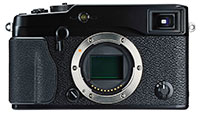
Fujifilm X-Pro1 (2012)
- 16 MP X-Trans CMOS Sensor
- ISO 200-6400, expandable to 100, 12800 and 25600 (JPG only)
- Contrast detection AF with 49 points, 6 fps burst
- Full HD movie up to 24fps
- Hybrid Viewfinder (Optical + Electronic)
Check out our Fuji X-Pro1 complete review.
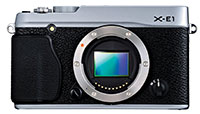
Fujifilm X-E1 (2012)
- 16 MP X-Trans CMOS Sensor
- ISO 200-6400, expandable to 100, 12800 and 25600 (JPG only)
- Contrast detection AF with 49 points, 6 fps burst
- Full HD movie up to 24fps
- 2,360k dots EVF
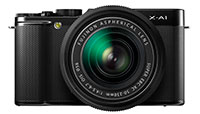
Fujifilm X-A1 (2013)
- 16 MP CMOS Sensor
- ISO 200-6400, expandable to 100, 12800 and 25600 (JPG only)
- Contrast detection AF with 49 points, 5.6 fps burst
- Full HD movie up to 30fps
- Tilting LCD screen
Check out our Fuji X-A1 hands-on!
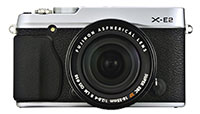
Fujifilm X-E2 (2013)
- 16 MP X-Trans II CMOS Sensor
- ISO 200-6400, expandable to 100, 12800 and 25600 (JPG only)
- Phase/Contrast detection AF with 49 points, 7 fps burst
- Full HD movie up to 60fps
- 2,360k dots EVF
- Wifi
Check out our Fuji X-E2 hands-on !
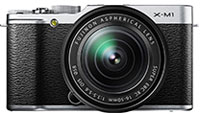
Fujifilm X-M1 (2013)
- 16 MP X-Trans CMOS Sensor
- ISO 200-6400, expandable to 100, 12800 and 25600 (JPG only)
- Contrast detection AF with 49 points, 6 fps burst
- Full HD movie up to 24fps
- Tilting LCD
Check out our Fuji X-M1 review!
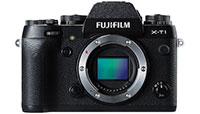
Fujifilm X-T1 (2014)
- 16 MP X-Trans II CMOS Sensor
- ISO 200-6400, expandable to 100, 12800, 25600 and 51200 (JPG only)
- Contrast/Phase detection AF with 49 points, 8fps burst in C-AF
- Full HD movie up to 60fps
- 2,360k dots EVF (0.77x magnification)
- Tilting LCD
- Weather sealed
- Wifi
Check out our Fuji X-T1 articles !
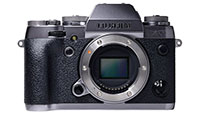
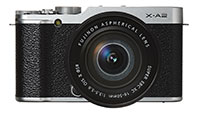
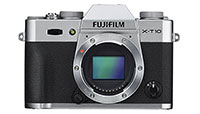
Fujifilm X-T10 (2015)
- 16 MP X-Trans II CMOS Sensor
- ISO 200-6400, expandable to 100, 12800, 25600 and 51200 (JPG only)
- Contrast/Phase detection AF with 49 points, 8fps burst in C-AF
- Full HD movie up to 60fps
- 2,360k dots EVF
- Tilting LCD
- Wifi
Check out our Fujifilm X-T10 review here!

Hasselblad
- Sony E-mount – APS-C Sensor
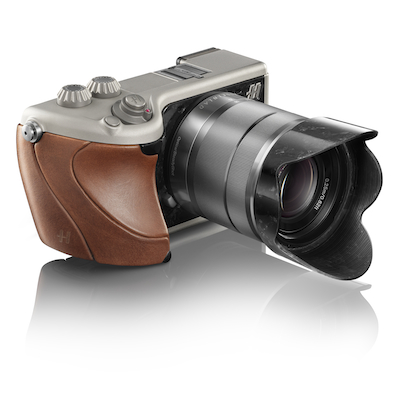
Hasselblad is known for its medium format cameras. They first attempt in the mirrorless camera is quiet unique: the camera is a Sony Nex 7 on the inside with a luxury Italian design on the outside. As you can guess, it is very expensive and aimed mainly to collectors. The project has been now discontinued.
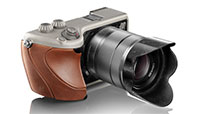
Kodak
- Micro Four Thirds System
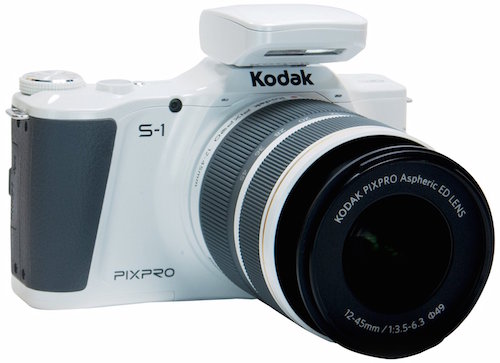
The Kodak S1 is a micro four thirds camera that has been seen released in 2014 after being announced almost two years before. It is not easy to find and is probably one of the least popular mirrorless camera.
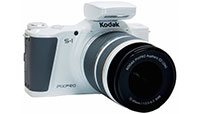
Kodak S-1 (2014)
- 16 mp CMOS sensor
- 200-12800 ISO
- Contrast detection AF with 25 points, 5 fps burst
- Full HD video up to 30fps
- Tilting LCD
- Wifi
Leica
- Leica M Mount – APS-H / Full-Frame Sensor
- Leica T mount – APS-C sensor
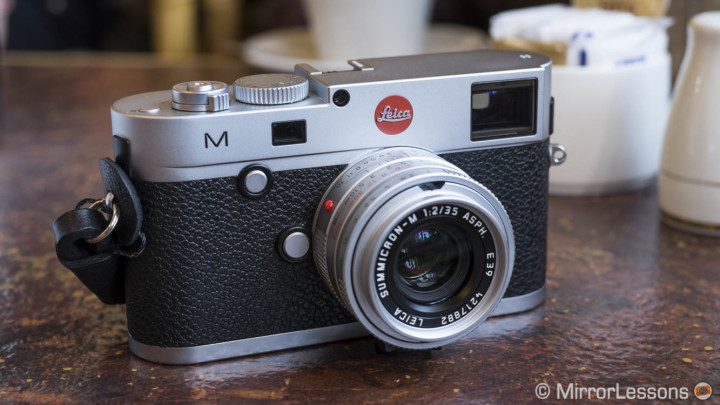
The Leica M system finds its origin in 1953 with the M3, a 35mm film camera. It is also known as rangefinder cameras thanks to its unique manual focusing system. Not having a flipping mirror makes it suitable among mirrorless cameras but it stands apart from the rest of the crowd for its important history, build quality, manual controls and its lenses, known by many as the best photography lenses in the world. In 2008, Leica released the first digital M, the M8. In 2014, they released their first APS-C system with autofocus, the Leica T. Leica cameras can be divided into the following categories:
- M: flagship rangefinder camera (manual focus only)
- M-P: more discreet version without the red logo and camera name at the front
- T: APS-C system with autofocus
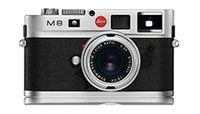
Leica M8 (2006)
- 10 mp CCD APS-H sensor
- ISO 160-2500
- Manual focus only
- Optical rangefinder
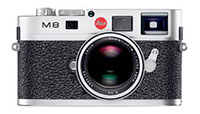
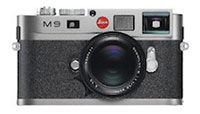
Leica M9 (2009)
- 18 mp CCD Full Frame Sensor
- ISO 160 to 2,500
- Manual Focus Only
- Optical Rangefinder
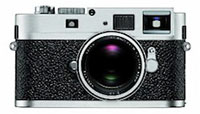
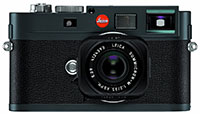
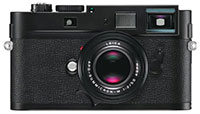
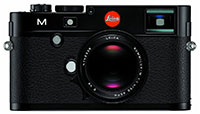
Leica M Typ 240 (2012)
- 24 mp CMOS Full Frame Sensor
- ISO 200 – ISO 3200, expandable to 100 and 6400
- Manual focus only
- Full HD up to 25fps
- Optical Rangefinder
- First Digital M with Live View on the LCD
Check out our Leica M 240 review!
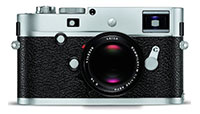
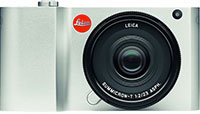
Leica T Typ 701 (2014)
- 16 mp CMOS APS-C Sensor
- ISO 125-12500
- Contrast detection AF with 25 points, 5fps burst
- Full HD video up to 30 fps
- Touch sensitive LCD
- Wifi
Check out our Leica T review!
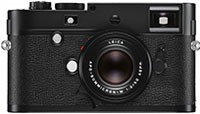
The german brand also released many special editions of its digital cameras. They are produced in a limited quantity and aimed to collectors mainly because of their very expensive. Here is the list:
- Leica M8.2 Safari edition
- Leica M9 Titanium: limited edition designed by Walter de Silva (Audi designer)
- Leica M-60: same as the M 240 but without the LCD screen and buttons except the shutter speed and ISO dial. It is made of stainless steel and available in 600 copies only (our hands-on here).
- Leica M-P Typ 240 Safari edition
- Leica M-P Typ 240 Correspondent: designed by rock star Lenny Kravitz, there are 125 copies only and aged by hand.
Nikon
- Nikon 1 Mount – CX Sensor (1 inch)
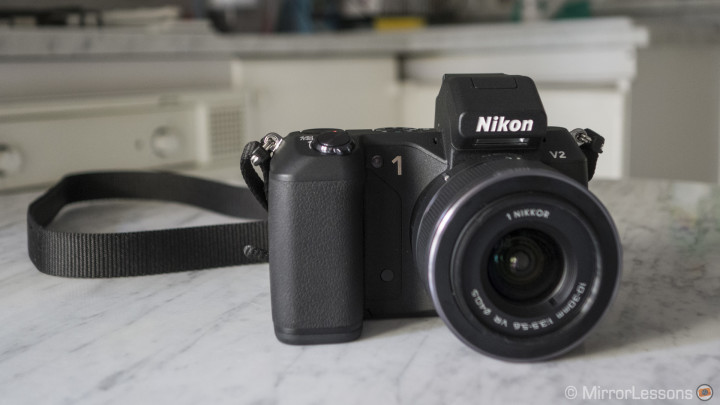
The first Nikon 1 is released at the end of 2011. Instead of focusing on a big sensor like its competitors, Nikon decides to build a system where speed and AF performance are the main characteristics. Despite its stunning performance and many of its unique features, Nikon 1 cameras haven’t become really popular yet. The smaller sensor and high prices of the first models didn’t convince everyone which prompt the brand to rethink the series and the camera models. For now it still retains one of the fastest autofocus system in the mirrorless market. Nikon cameras can be divided into the following categories:
- S: entry level model
- J: mid-level mode
- V: more advanced model
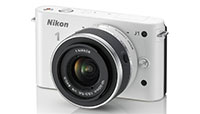
Nikon 1 J1 (2011)
- 10 mp CMOS sensor
- ISO 100-3200
- Contrast/Phase detection AF with 135 points, up to 60 fps burst
- Full HD video up to 60fps, slow motion at lower resolutions
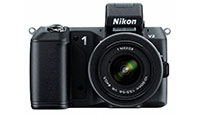
Nikon 1 V1 (2011)
- 10 mp CMOS sensor
- ISO 100-3200
- Contrast/Phase detection AF with 135 points, up to 60 fps burst
- Full HD video up to 60fps, slow motion at lower resolutions
- EVF
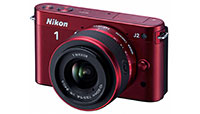
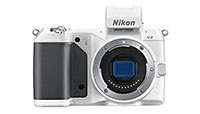
Nikon 1 V2 (2012)
- 14 mp CMOS sensor
- ISO 160-6400
- Contrast/Phase detection AF with 135 points, up to 60 fps burst
- Full HD video up to 60fps, slow motion at lower resolutions
- EVF
Check out our Nikon 1 V2 hands-on!
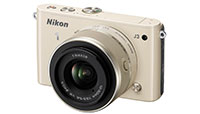
Nikon 1 J3 (2013)
- 14 mp CMOS sensor
- ISO 160-6400
- Contrast/Phase detection AF with 135 points, up to 60 fps burst
- Full HD video up to 60fps, slow motion at lower resolutions
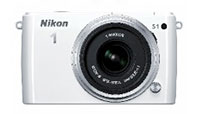
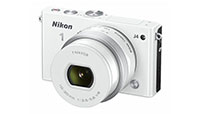
Nikon 1 J4 (2014)
- 18 mp CMOS sensor
- ISO 160-12800
- Contrast/Phase detection AF with 171 points, up to 60 fps burst
- Full HD video up to 60fps, slow motion at lower resolutions
- Touch screen LCD
- Wifi
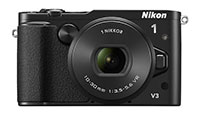
Nikon 1 V3 (2014)
- 18 mp CMOS sensor
- ISO 160-12800
- Contrast/Phase detection AF with 171 points, up to 60 fps burst
- Full HD video up to 60fps, slow motion at lower resolutions
- Touch screen LCD
- Wifi
- New design, optional EVF and grip
Check out our Nikon 1 V3 hands-on!
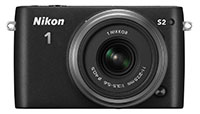
Nikon 1 S2 (2014)
- 14 mp CMOS sensor
- ISO 160-12800
- Contrast/Phase detection AF with 135 points, up to 60 fps burst
- Full HD video up to 60fps, slow motion at lower resolutions
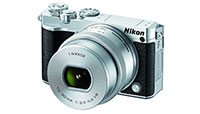
Nikon 1 J5 (2015)
- 20 mp CMOS sensor
- ISO 160-12800
- Contrast/Phase detection AF with 171 points, up to 60 fps burst
- Full HD video up to 60fps, slow motion at lower resolutions
- Tilting touch sensitive LCD
- Wifi
Olympus
- Micro Four Thirds System
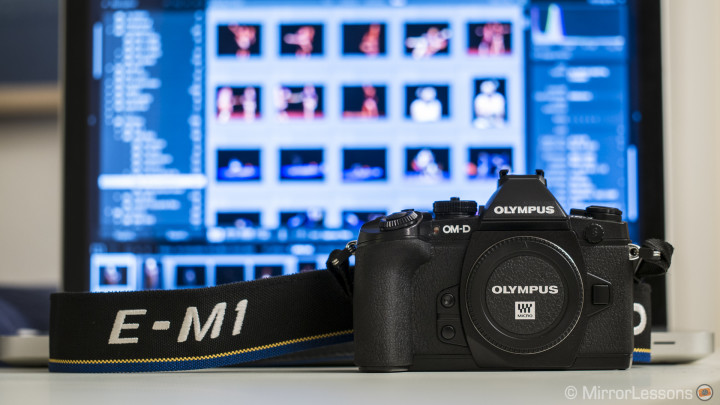
Olympus and Panasonic are the pioneer of modern MILC cameras thanks to the development of the Micro Four Thirds system, that is today the most complete among all mirrorless systems. Olympus has three main types of camera. The Pen series first started in 2009, inspired by the original and compact Pen film camera. The OM-D series is inspired by Olympus analogue SLRs while the latter addition, the Air, is a smartphone camera similar to the Sony QX series. After developping the 4/3 DSLR system for years, Olympus finally dropped it for the more compact and fast micro four thirds with the launch on the flagship model E-M1 that is compatible with both M4/3 and 4/3 lenses. As of today, it is one of the most reliable mirrorless system even for professional photographers. Olympus cameras can be divided into the following categories:
- Pen: more compact body that lacks a viewfinder, inspired by the Olympus Pen film camera
- E-PM: also called Mini, it is the entry level model
- E-PL: also called light, it is the mid-level model
- E-P: it is the more advanced model
- OM-D: SLR style body with viewfinder
- E-M10: entry level model
- E-M5: mid-level model
- E-M1: flagship model
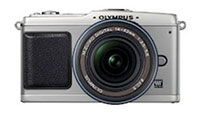
Olympus Pen E-P1 (2009)
- 12 mp Live MOS sensor
- ISO 200-3200
- Contrast detection AF with 11 points, 3fps burst
- HD video up to 30fps
- 2 axis image stabilisation
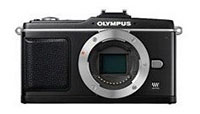
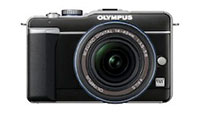
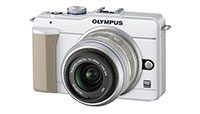
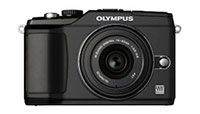
Olympus Pen E-PL2 (2011)
- 12 mp Live MOS sensor
- ISO 200-3200
- Contrast detection AF with 11 points, 3fps burst
- HD video up to 30fps
- 2 axis image stabilisation
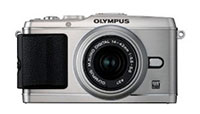
Olympus Pen E-P3 (2011)
- 12 mp Live MOS sensor
- ISO 200-12800
- Contrast detection AF with 35 points, 3fps burst
- Full HD video up to 60i
- 2 axis image stabilisation
- Touch sensitive LCD
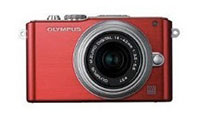
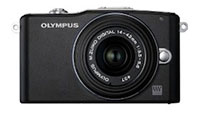
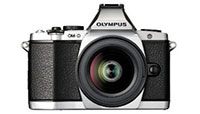
Olympus OM-D E-M5 (2012)
- 16 mp Live MOS sensor
- 200-25600 ISO, Pull 100
- Contrast detection AF with 35 points, 9fps burst
- Full HD movie up to 30fps
- 5 axis image stabilisation
- Splash and freeze proof
- 1,440k dots EVF
- Touch sensitive tilting LCD
Check out our OM-D E-M5 review!
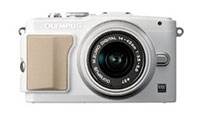
Olympus Pen E-PL5 (2012)
- 16 mp Live MOS sensor
- 200-25600 ISO
- Contrast detection AF with 35 points, 8fps burst
- Full HD movie up to 30fps
- 2 axis image stabilisation
- Touch sensitive LCD, tilting up to 170°
- Removable front grip
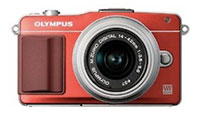
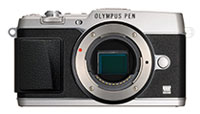
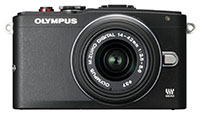
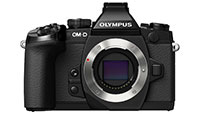
Olympus OM-D E-M1 (2013)
- 16 mp Live MOS sensor
- 200-25600 ISO, Pull 100
- Contrast/Phase detection AF with 81 points, 9fps burst
- Full HD movie up to 30fps
- 5 axis image stabilisation
- Splash, dust and freeze proof
- 2,360k dots EVF
- Touch sensitive tilting LCD
- Wifi
Check out our Olympus OM-D E-M1 review!
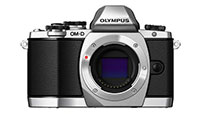
Olympus OM-D E-M10 (2014)
- 16 mp Live MOS sensor
- 200-25600 ISO, Pull 100
- Contrast detection AF with 81 points, 8fps burst
- Full HD movie up to 30fps
- 3 axis image stabilisation
- 2,360k dots EVF
- Touch sensitive tilting LCD
- Wifi
Check out our Olympus OM-D E-M10 review!
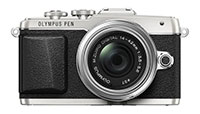
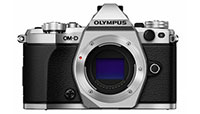
Olympus OM-D E-M5 mark II (2015)
- 16 mp Live MOS sensor
- 200-25600 ISO, Pull 100
- Contrast detection AF with 81 points, 8fps burst
- Full HD movie up to 60fps
- 5 axis image stabilisation
- High Res mode
- 2,360k dots EVF
- Touch sensitive flipping LCD
- Splash, dust and freeze proof
- Wifi
Check out our OM-D E-M5 mark II review!
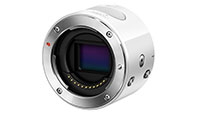
Panasonic Lumix
- Micro Four Thirds System
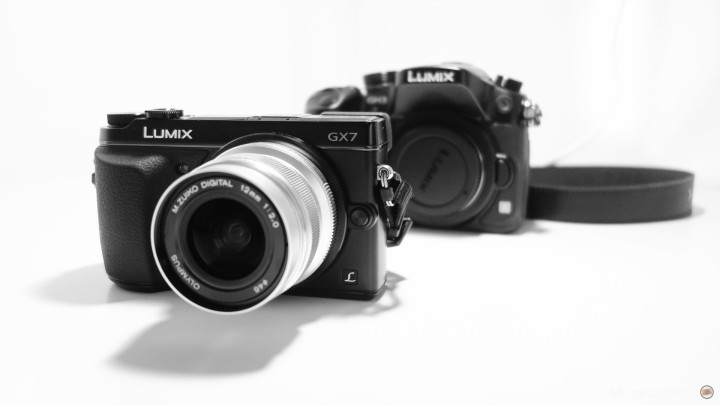
Panasonic created the MFT system with Olympus. Under the Lumix sub-brand, Panasonic released the first micro four camera ever, the G1, in October 2008. Lumix cameras are the perfect example of an hybrid solution with equal performance for stills and for video. Some of its flagship models such as the GH3 and the GH4 are very popular among filmmakers. It is also the first brand to have included the 4k video format in its cameras and with the on-going development of 4K photo technology, the brand is aiming to blend photography and video together more and more. The video performance, touch screen capabilities and autofocus performance are among the best in the mirrorless market. The partnership with Leica allows Panasonic to release high quality autofocus lenses designed by the prestigious german brand. Panasonic cameras can be divided into the following categories:
- GF: entry level model
- G: mid level model
- GM: smallest model
- GX: advanced model
- GH: flagship model
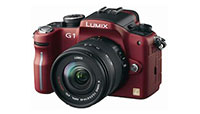
Panasonic Lumix DMC-G1 (2008)
- 12 mp Live MOS sensor
- ISO 100-3200
- Contrast detection AF with 23 points, 3 fps burst
- 460k dots EVF
- Multi-angle flipping LCD
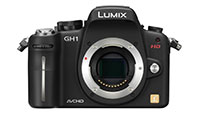
Panasonic Lumix DMC-GH1 (2009)
- 14 mp Live MOS sensor
- ISO 100-3200
- Contrast detection AF with 23 points, 3 fps burst
- Full HD video up to 24fps
- 1,440k dots EVF
- Multi-angle flipping LCD
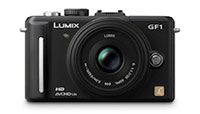
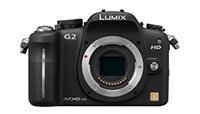
Panasonic Lumix DMC-G2 (2010)
- 12 mp Live MOS sensor
- ISO 100-6400
- Contrast detection AF with 23 points, 3.2 fps burst
- HD (720p) video up to 30 fps
- 1,440k dots EVF
- Multi-angle flipping touch sensitive LCD
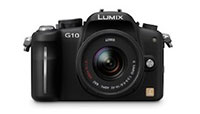
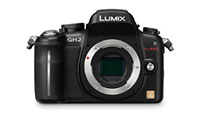
Panasonic Lumix DMC-GH2 (2010)
- 16 mp Live MOS sensor
- ISO 160-12800
- Contrast detection AF with 23 points, 5 fps burst, 40fps at 4mp/JPG
- Full HD video up to 60i/24p
- 1,530k dots EVF
- Multi-angle flipping touch sensitive LCD
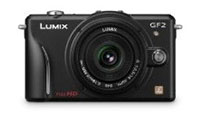
Panasonic Lumix DMC-GF2 (2010)
- 12 mp Live MOS sensor
- ISO 100-6400
- Contrast detection AF with 23 points, 3.2 fps burst
- Full HD video up to 30 fps
- Touch sensitive LCD
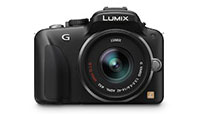
Panasonic Lumix DMC-G3 (2011)
- 16.7 mp Live MOS sensor
- ISO 160-6400
- Contrast detection AF with 23 points, 4 fps burst, 20fps at 4mp/JPG
- Full HD video up to 60i/24p
- 1,440k dots EVF
- Multi-angle flipping touch sensitive LCD
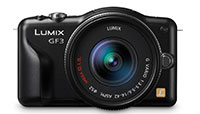
Panasonic Lumix DMC-GF3 (2011)
- 12 mp Live MOS sensor
- ISO 160-6400
- Contrast detection AF with 23 points, 3.8 fps burst
- Full HD video up to 60i
- Touch sensitive LCD
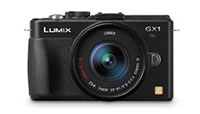
Panasonic Lumix GX1 (2011)
- 16 mp Live MOS sensor
- ISO 160-12800
- Contrast detection AF with 23 points, 4.2 fps burst, 20fps at 4mp/JPG
- Full HD video up to 60i/24p
- Touch sensitive LCD
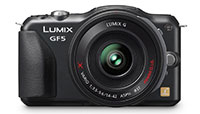
Panasonic Lumix DMC-GF5 (2012)
- 12 mp Live MOS sensor
- ISO 160-12800
- Contrast detection AF with 23 points, 4 fps burst
- Full HD video up to 60fps
- Touch sensitive LCD
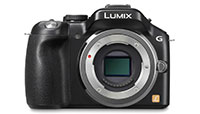
Panasonic Lumix DMC-G5 (2012)
- 16 mp Live MOS sensor
- ISO 160-12800
- Contrast detection AF with 23 points, 6 fps burst
- Full HD video up to 60fps
- 1,440k dots EVF
- Multi-angle flipping touch sensitive LCD
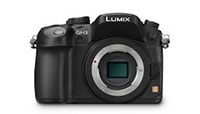
Panasonic Lumix DMC-GH3 (2012)
- 16 mp Live MOS sensor
- ISO 200-25600, pull 125
- Contrast detection AF with 23 points, 6 fps burst
- Full HD video up to 60fps, 72mbps ALL-I
- 1,700k dots EVF
- Multi-angle flipping touch sensitive LCD
- Mic input / Headphone output
- Dust and splash proof
- Wifi
Check out our Panasonic GH3 review!
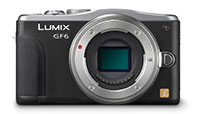
Panasonic Lumix DMC-GF6 (2013)
- 16 mp Live MOS sensor
- ISO 160-12800, push 25600
- Contrast detection AF with 23 points, 4.2 fps burst
- Full HD video up to 30fps
- Tilting touch sensitive LCD
- Wifi / NFC
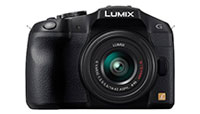
Panasonic Lumix DMC-G6 (2013)
- 16 mp Live MOS sensor
- ISO 160-12800, push 25600
- Contrast detection AF with 23 points, 7 fps burst
- Full HD video up to 30fps
- 1,440k dots EVF
- Multi-angle flipping /rotating touch sensitive LCD
- Mic input
- Wifi / NFC
Check out our Panasonic G6 review!
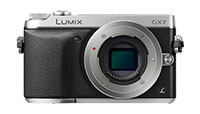
Panasonic Lumix GX7 (2013)
- 16 mp Live MOS sensor
- ISO 200-25600, pull 125
- Contrast detection AF with 23 points, 5 fps burst
- Full HD video up to 60fps
- Sensor shift stabilisation (2 axis)
- 2,760k dots tilting EVF
- Tilting touch sensitive LCD
- Wifi / NFC
Check out our Panasonic GX7 review!
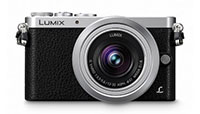
Panasonic Lumix DMC-GM1 (2013)
- 16 mp Live MOS sensor
- ISO 200-25600, pull 125
- Contrast detection AF with 23 points, 5 fps burst
- Full HD video up to 30fps
- Touch sensitive LCD
- Wifi
- The smallest MFT camera
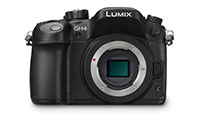
Panasonic Lumix DMC-GH4 (2014)
- 16 mp Live MOS sensor
- ISO 200-25600, pull 125
- Contrast detection DfD AF with 49 points, 12 fps burst
- 4K video up to 30fps, Full HD up to 96fps, 200mbps ALL-I, 4K Photo
- 2,359k dots EVF
- Multi-angle flipping touch sensitive LCD
- Mic input / Headphone output
- Dust and splash proof
- Wifi
Check out our Lumix GH4 review!
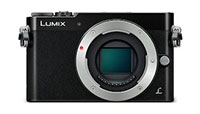
Panasonic Lumix DMC-GM5 (2014)
- 16 mp Live MOS sensor
- ISO 200-25600, pull 100
- Contrast detection AF with 23 points, 5.8 fps burst
- Full HD video up to 60fps
- 1,166k dots EVF
- Touch sensitive LCD
- Wifi
Check out our GM5 first impressions review!
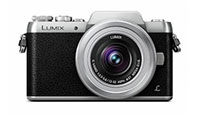
Panasonic Lumix DMC-GF7 (2015)
- 16 mp Live MOS sensor
- ISO 200-25600, pull 100
- Contrast detection AF with 23 points, 5.8 fps burst
- Full HD video up to 60fps
- 180° Tilting Touch sensitive LCD
- Wifi
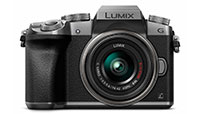
Panasonic Lumix DMC-G7 (2015)
- 16 mp Live MOS sensor
- ISO 200-25600, pull 160
- Contrast detection DfD AF with 49 points, 7 fps burst
- 4K video up to 30fps, Full HD up to 60fps, 4K Photo
- 2,360k dots EVF
- Multi-angle flipping touch sensitive LCD
- Mic input
- Wifi
Check out our Panasonic G7 review!
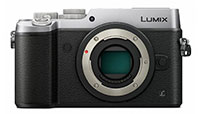
Panasonic Lumix DMC-GX8 (2015)
- 20 mp Live MOS sensor
- ISO 200-25600, pull 100
- Contrast detection DfD AF with 49 points, 12 fps burst
- 4K video up to 30fps, Full HD up to 60fps, 4K Photo
- 2,360k dots tilting EVF
- Multi-angle flipping touch sensitive LCD
- Splash and Dust resistant
- Mic input
- Wifi / NFC
Pentax
- Pentax K mount – APS-C
- Pentax Q mount – 1/2/3″ and 1/1.7″
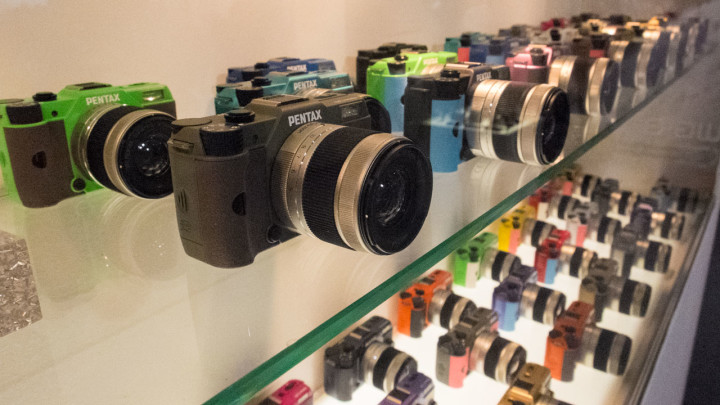
Pentax created the smallest MILC cameras with the Pentax Q in 2011. The camera features a small sensor usually found in compact cameras but have a range of dedicated interchangeable lenses. The Q10 also comes with a vast set of colour combination. However the Q series lost the title of smallest MILC when the Panasonic GM1 was released in 2013. Considering that the latter spots a much larger sensor with more lens offering, we are not sure yet of the future of the Q system. Pentax also released the K-01 in 2012 that has an APS-C sensor and share the same K-mount as its DSLR cameras. However it has been discontinued in 2013.
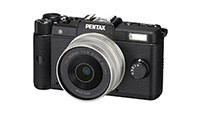
Pentax Q (2011)
- 12 mp CMOS 1/2,3″ BSI sensor
- ISO 125-6400
- Contrast detection AF with 25 points, 5fps burst
- Full HD video up to 30fps
- Sensor shift stabilisation
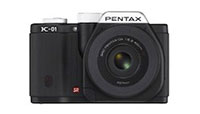
Pentax K-01 (2012)
- 16 mp APS-C CMOS sensor
- ISO 100-12800
- Contrast detection AF with 81 points, 6fps burst
- Full HD video up to 30fps
- Sensor shift stabilisation
- Compatible with all PENTAX K-mount lenses
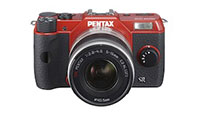
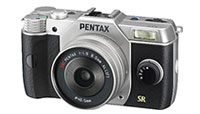
Pentax Q7 (2013)
- 12 MP CMOS 1/1.7″ BSI sensor
- ISO 100-12800
- Contrast detection AF with 25 points, 5fps burst
- Full HD video up to 30fps
- Sensor shift stabilisation
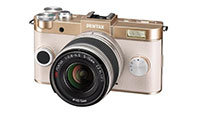
Polaroid
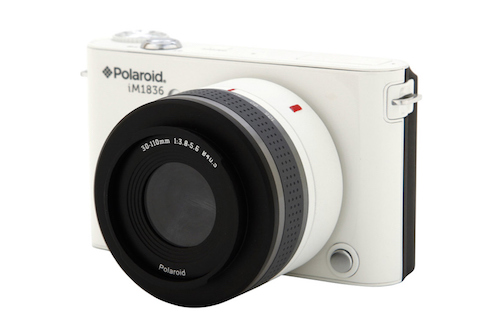
Polaroid announced in 2013 a series of MILC cameras with 1 inch sensor incorporated into the original Polaroid lenses. Similar to the Ricoh GXR, the sensor is inside the lens instead of being inside the body. The cameras also ran an Android OS. However due to the patent dispute with Nikon regarding the design, the project has been suspended and the camera were never released into the market. The following models were in the works:
- Polaroid iM1836
- Polaroid iM1030
- Polaroid iS2433
Ricoh
- Interchangeable Unit Camera System (you change both the lens and the sensor)
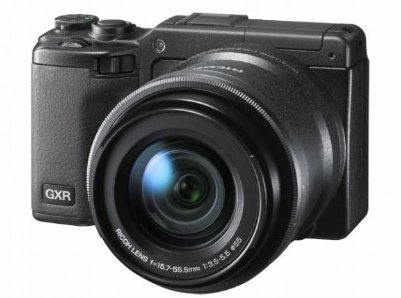
In 2009, Ricoh announced a new concept of digital camera system. Instead of having a traditional body with a sensor and different lenses, the GXR is a body that can mount different “units”. Each units contains the lens, the sensor and the processor engine. There are different units available with various sensor size and focal lengths. The system is now discontinued in most countries.
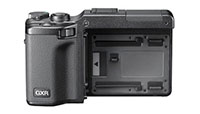
Ricoh GXR (2009)
- Camera unit
- 3″ LCD with 920k dots
- Built-in Flash
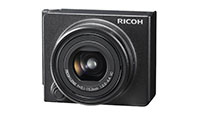
Ricoh S10 24-72mm f/2.5-4.4 (2009)
- 10 mp 1/1.7″ CCD sensor
- ISO 100-3200
- Contrast detection AF, 1.6 fps burst
- SD video at 30fps
- Sensor shift stabilisation
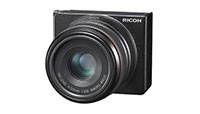
Ricoh A12 50mm f/2.5 Macro (2009)
- 12 mp APS-C CMOS sensor
- ISO 200-3200
- Contrast detection AF, 3 fps burst
- HD (720p) video at 24fps
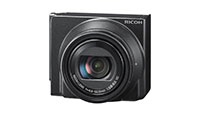
Ricoh P10 28-300mm f/3.5-5.6 (2010)
- 10 mp 2/3″ CMOS BSI sensor
- ISO 100-3200
- Contrast detection AF, 5 fps burst
- HD (720p) video at 30fps, 120fps at lower resolution
- Sensor shift stabilisation
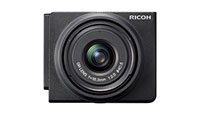
Ricoh A12 28mm f/2.5 (2010)
- 12.3 mp APS-C CMOS sensor
- ISO 200-3200
- Contrast detection AF, 5 fps burst
- HD (720p) video at 24fps
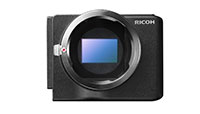
Ricoh A12 Leica M mount (2011)
- 12.3 mp APS-C CMOS sensor
- ISO 200-3200
- Contrast detection AF, 5 fps burst
- HD (720p) video at 24fps
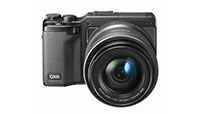
Ricoh A16 24-85mm f3.5-5.5 (2012)
- 16 mp APS-C CMOS sensor
- ISO 200-3200
- Contrast detection AF, 5 fps burst
- HD (720p) video at 30fps
Samsung
- Samsung NX-Mount – APS-C sensor
- Samsung NX-Mini mount – 1″ sensor
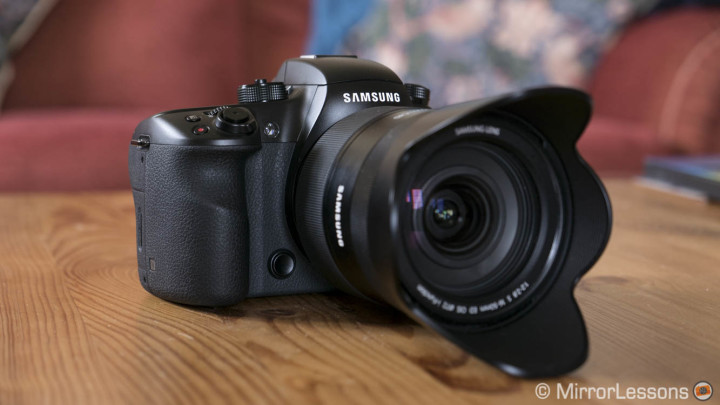
The Samsung NX APS-C system was first introduced in 2010. Despite the lacks of popularity, the NX system offers some very interesting features and has the most advanced Wireless connectivity that include often social media sharing, e-mail and other services to upload your images from the camera directly. Samsung even launched the Galaxy NX, an advanced SLR-style camera with 3G and 4G connectivity built-in and powered by an Android operative system (one of the most popular OS for smartphones). In 2014 they also introduced a smaller system called Mini that relies on a 1 inch sensor. Samsung cameras can be divided into the following categories:
- NX0000: entry level model without EVF
- NX000: advanced model without EVF
- NX00: mid level model with SLR style body and EVF
- NX0: flagship model with SLR style body and EVF
- Galaxy NX: advanced SLR style model powered by Android OS
- NX-Mini: entry level and smaller system
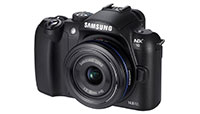
Samsung NX10 (2010)
- 14 mp APS-C CMOS sensor
- ISO 100-3200
- Contrast detection AF with 15 points, 3 fps burst
- HD (720p) video at 30fps
- 921k dots EVF
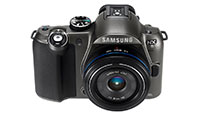
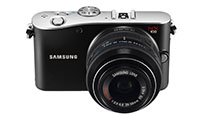
Samsung NX100 (2010)
- 14 mp APS-C CMOS sensor
- ISO 100-3200
- Contrast detection AF with 15 points, 3 fps burst
- HD (720p) video at 30fps
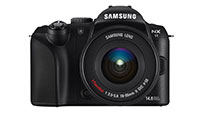
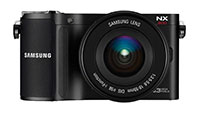
Samsung NX200 (2011)
- 20 mp APS-C CMOS sensor
- ISO 100-12800
- Contrast detection AF with 15 points, 7 fps burst
- Full HD video at 30fps
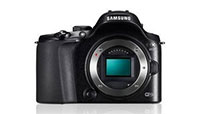
Samsung NX20 (2012)
- 20 mp APS-C CMOS sensor
- ISO 100-12800
- Contrast detection AF with 15 points, 8 fps burst
- Full HD video at 30fps
- 920k dots EVF
- Multi-angle articulated AMOLED display
- Wifi
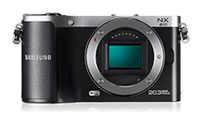
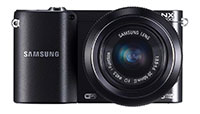
Samsung NX1000 (2012)
- 20 mp APS-C CMOS sensor
- ISO 100-12800
- Contrast detection AF with 15 points, 7 fps burst
- Full HD video at 24fps
- Wifi
- Cheaper version than the NX210
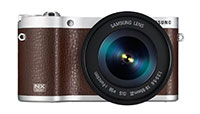
Samsung NX300 (2013)
- 20 mp APS-C CMOS sensor
- ISO 100-25600
- Contrast/Phase detection AF with 247 points, 8.6 fps burst
- Full HD video at 60fps
- Tilting touch sensitive OLED screen
- Wifi with smart features (social media, e-mail, etc.)
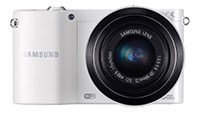
Samsung NX1100 (2013)
- 20 mp APS-C CMOS sensor
- ISO 100-12800
- Contrast detection AF with 15 points, 8 fps burst
- Full HD video at 30fps
- Wifi
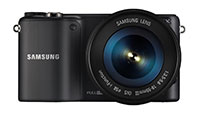
Samsung NX2000 (2013)
- 20 mp APS-C CMOS sensor
- ISO 100-25600
- Contrast detection AF with 15 points, 8.6 fps burst
- Full HD video at 30fps
- Wifi/NFC with smart features (social media, e-mail, etc.)
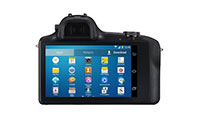
Samsung Galaxy NX (2013)
- 20 mp APS-C CMOS sensor
- ISO 100-25600
- Contrast/Phase detection AF with 247 points, 9 fps burst
- Full HD video at 60fps
- 1,440k dots EVF
- Touch sensitive 4.77″ LCD screen
- Wifi, 3G and 4G connectivity
- World’s first Android OS camera
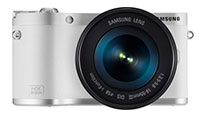
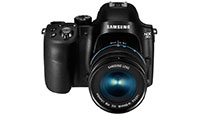
Samsung NX30 (2014)
- 20 mp APS-C CMOS sensor
- ISO 100-25600
- Contrast/Phase detection AF with 247 points, 9 fps burst
- Full HD video at 60fps
- 1,440k dots tilting EVF
- Multi-angle articulated touch sensitive AMOLED screen
- Mic input
- Wifi/NFC with smart features
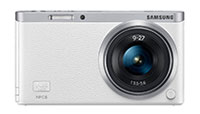
Samsung NX Mini (2014)
- 20.5 mp BSI 1″ CMOS sensor
- ISO 160-12800, pull 100, push 25600
- Contrast detection AF with 21 points, 6 fps burst
- Full HD video at 30fps
- 180° tilting touch sensitive LCD
- Wifi/NFC with Smart Features
- The thinnest CSC on the market
Check out our Samsung NX Mini review!
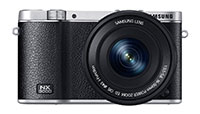
Samsung NX3000 (2014)
- 20 mp APS-C CMOS sensor
- ISO 100-25600
- Contrast detection AF with 35 points, 5 fps burst
- Full HD video at 30fps
- 180° tilting touch sensitive LCD
- Wifi/NFC
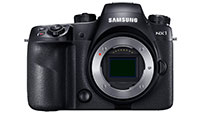
Samsung NX1 (2014)
- 28 mp APS-C CMOS BSI sensor
- ISO 100-25600, push 51200
- Contrast/Phase detection AF with 209 points, 15 fps burst
- 4K video at 30fps, Full HD up to 120fps
- 2,360k dots EVF
- Tilting touch sensitive AMOLED screen
- Mic input / Headphone output
- Splash and dust proof
- Wifi/NFC
Check out our Samsung NX1 complete review!
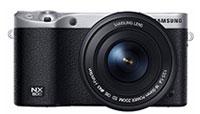
Samsung NX500 (2015)
- 28 mp APS-C CMOS BSI sensor
- ISO 100-25600, push 51200
- Contrast/Phase detection AF with 209 points, 9 fps burst
- 4K video at 30fps, Full HD up to 60fps
- Tilting touch sensitive AMOLED screen
- Wifi/NFC
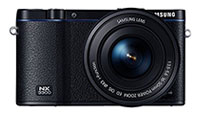
Sony
- Sony E-Mount – APS-C Sensor / Full Frame Sensor
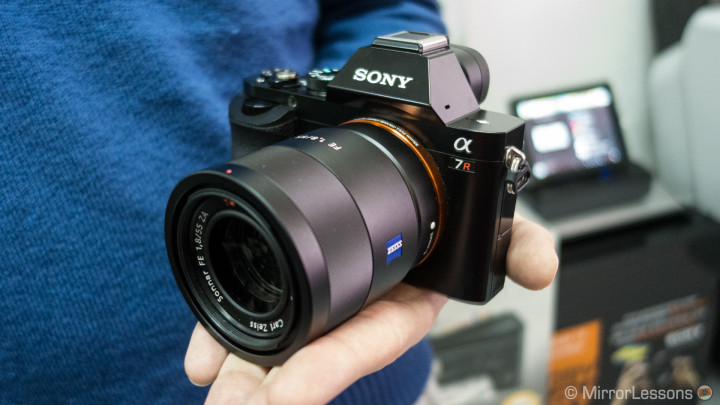
Sony inherited Minolta know-how and technology when it acquired the company in 2005. They first adventured in the DSLR category then expanded their line of products by releasing their MILC system called NEX in 2010. From the beginning, the very compact body paired with a high quality APS-C sensor brought a good success and customer feedback to the Japanese corporation. In late 2014, Sony went further and released its full frame mirrorless system with the Sony A7 and A7r. Sony also re-branded its APS-C series by getting rid of the Nex name and using instead the “Alpha” name. In 2014 they also released the QX series, the first “Smarpthone camera” that works with a mobile device. Sony is also one of the top sensor producer and owned almost 50% of the market. They also have a prestigious partnership with Carl Zeiss for the lens department. Sony cameras can be divided into the following categories:
- Nex 3 / a5000: entry level APS-C model
- Nex 5 / a5100: mid level APS-C model
- Nex 6 / a6000: advanced APS-C model
- Nex 7: flagship APS-C model
- A7: advanced full frame model
- A7s: advanced full frame model designed mainly for video shooting
- A7r: flagship full frame model
- QX: smartphone camera
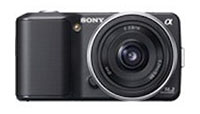
Sony NEX-3 (2010)
- 14 mp APS-C Exmor sensor
- ISO 200-12800
- Contrast detection AF with 25 points, 7 fps burst
- HD (720p) video at 30fps
- Tilting LCD screen
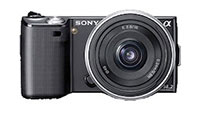
Sony NEX-5 (2010)
- 14 mp APS-C Exmor sensor
- ISO 200-12800
- Contrast detection AF with 25 points, 7 fps burst
- Full HD video at 60fps
- Tilting LCD screen
Check out our Sony Nex 5 review!
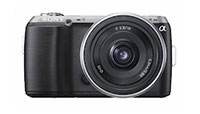
Sony NEX-C3 (2011)
- 16 mp APS-C Exmor sensor
- ISO 200-12800
- Contrast detection AF with 25 points, 5.5 fps burst
- HD (720p) video at 30fps
- Tilting LCD screen
- Slightly smaller than the Nex-3
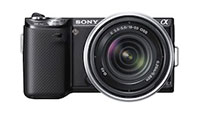
Sony NEX-5N (2011)
- 16 mp APS-C Exmor sensor
- ISO 100-25600
- Contrast detection AF with 25 points, 10 fps burst
- Full HD video at 60fps
- Tilting touch sensitive LCD screen
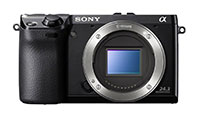
Sony NEX-7 (2011)
- 24 mp APS-C Exmor sensor
- ISO 100-16000
- Contrast detection AF with 25 points, 10 fps burst
- Full HD video at 60fps
- World’s first 2,359k dots OLED EVF
- Tilting LCD screen
- Mic input
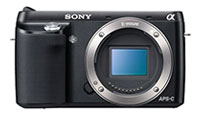
Sony NEX-F3 (2012)
- 16 mp APS-C Exmor sensor
- ISO 200-16000
- Contrast detection AF with 25 points, 5.5 fps burst
- Full HD video at 60i
- Tilting LCD screen
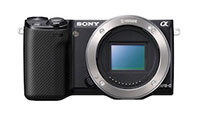
Sony NEX-5R (2012)
- 16 mp APS-C Exmor sensor
- ISO 100-25600
- Contrast/Phase detection AF with 25 points, 10 fps burst
- Full HD video at 60fps
- 180° Tilting touch sensitive LCD screen
- Wifi
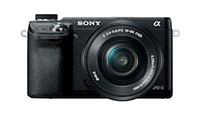
Sony NEX-6 (2012)
- 16 mp APS-C Exmor sensor
- ISO 100-25600
- Contrast/Phase detection AF with 25 points, 10 fps burst
- Full HD video at 60fps
- 2,359k dots EVF
- Tilting touch sensitive LCD screen
- Wifi
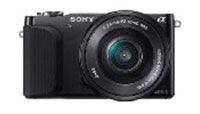
Sony NEX-3N (2013)
- 16 mp APS-C Exmor sensor
- ISO 200-16000
- Contrast detection AF with 25 points, 4 fps burst
- Full HD video at 60i
- 180° Tilting LCD screen
- Wifi
Check out our Sony NEX-3n review!
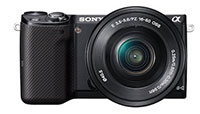
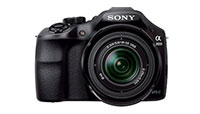
Sony a3000 (2013)
- 20 mp APS-C Exmor sensor
- ISO 100-16000
- Contrast detection AF with 25 points, 3.5 fps burst
- Full HD video at 60i
- 201k dots EVF
- DSLR like design
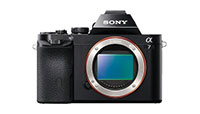
Sony A7 (2013)
- 24 mp full frame Exmor sensor
- ISO 100-25600
- Contrast/Phase detection AF with 117 points, 5 fps burst
- Full HD video at 60fps
- 2,359k dots EVF
- Tilting LCD screen
- Mic input / Headphone output
- Wifi
Check out our Sony A7 review!
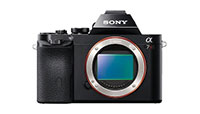
Sony A7r (2013)
- 36 mp full frame Exmor sensor
- ISO 100-25600
- Contrast detection AF with 25 points, 5 fps burst
- Full HD video at 60fps
- 2,359k dots EVF
- Tilting LCD screen
- Mic input / Headphone output
- Wifi
Check out our Sony A7r hands-on!
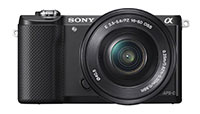
Sony a5000 (2014)
- 20 mp APS-C Exmor sensor
- ISO 100-16000
- Contrast detection AF with 25 points, 3.5 fps burst
- Full HD video at 60i
- 180° Tilting LCD
- Wifi
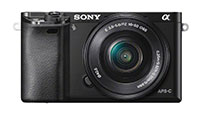
Sony a6000 (2014)
- 24 mp APS-C Exmor sensor
- ISO 100-25600
- Contrast/Phase detection AF with 179 points, 11 fps burst
- Full HD video at 60fps
- 1,440k dots EVF
- Tilting LCD screen
- Wifi
Check out our Sony a6000 review!
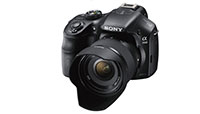
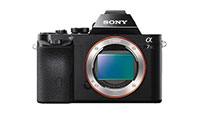
Sony A7s (2014)
- 12 mp full frame Exmor sensor
- ISO 100-409600
- Contrast detection AF with 25 points, 5 fps burst
- Full HD video at 60fps, 4K output via HDMI
- 2,359k dots EVF
- Tilting LCD screen
- Mic input / Headphone output
- Wifi
Check out our Sony A7s review!
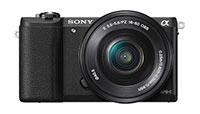
Sony a5100 (2014)
- 24 mp APS-C Exmor sensor
- ISO 100-25600
- Contrast/Phase detection AF with 179 points, 6 fps burst
- Full HD video at 60fps
- 180° Tilting touch sensitive LCD
- Wifi/NFC
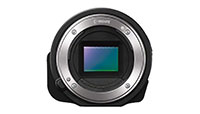
Sony QX1 (2014)
- Smartphone camera E-mount that works paired with a mobile device via Wifi
- 20 mp APS-C Exmor sensor
- ISO 100-16000
- Contrast detection AF with 25 points, 3.5 fps burst
- Full HD video at 30fps
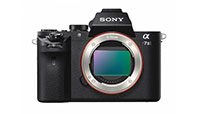
Sony A7 mark II (2014)
- 24 mp full frame Exmor sensor
- ISO 100-25600
- Contrast/Phase detection AF with 117 points, 5 fps burst
- Full HD video at 60fps
- 5-axis sensor stabilisation
- 2,359k dots EVF
- Tilting LCD screen
- Mic input / Headphone output
- Wifi
- Improved design and ergonomics
Check out our Sony A7 mark II review!
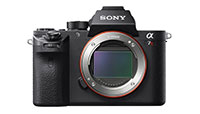
Sony A7r mark II (2015)
- 42 mp full frame BSI sensor
- ISO 100-25600, pull 50, push up to 102400
- Contrast/Phase detection AF with 399 points, 5 fps burst
- 4K video at 30fps, Full HD video at 60fps
- 5-axis sensor stabilisation
- 2,359k dots EVF
- Tilting LCD screen
- Mic input / Headphone output
- Wifi / NFC